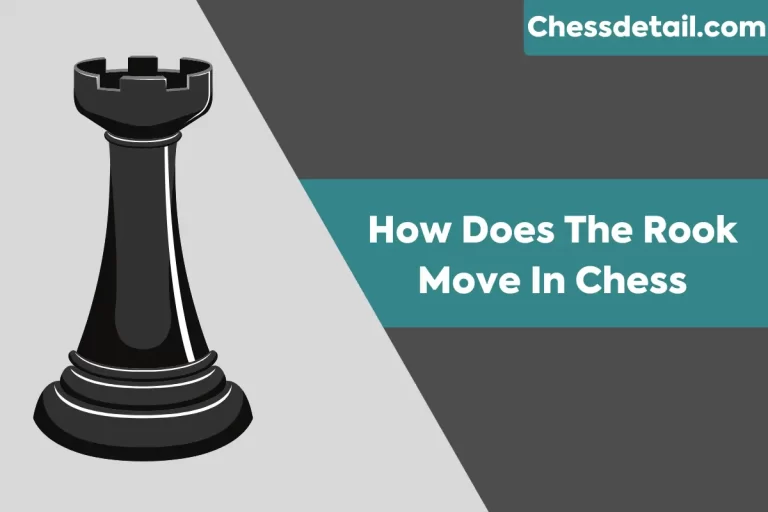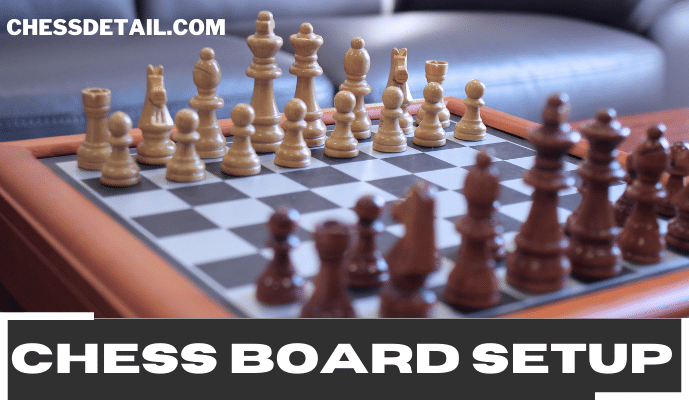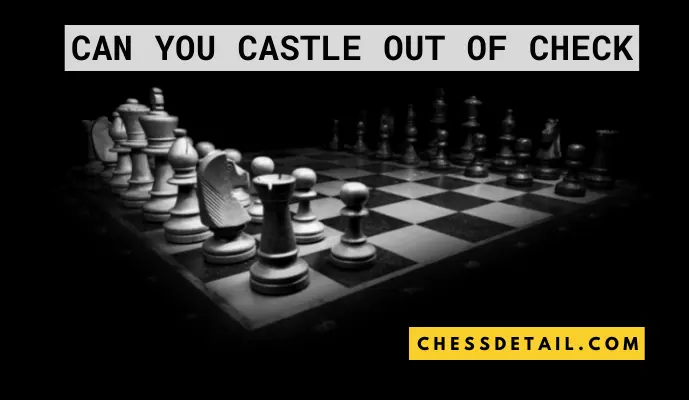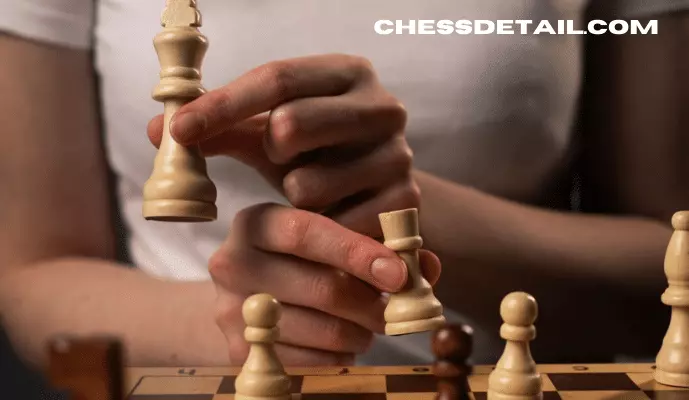How Does the Bishop Move in Chess [Everything Explained]
Whenever the bishop moves an unoccupied square diagonally, it does so regardless of its number. On a chessboard, bishops always move diagonally.
The diagonal orientation of bishops in chess makes them extremely valuable in strategic terms. You’ll learn how bishops can move in this overview if you’re still learning how to play the game. There are no special moves that bishops use in chess or deviations from their normal movements. Considering its straightforward nature, or should I say diagonally forward nature, this makes it an easy chess piece to learn.
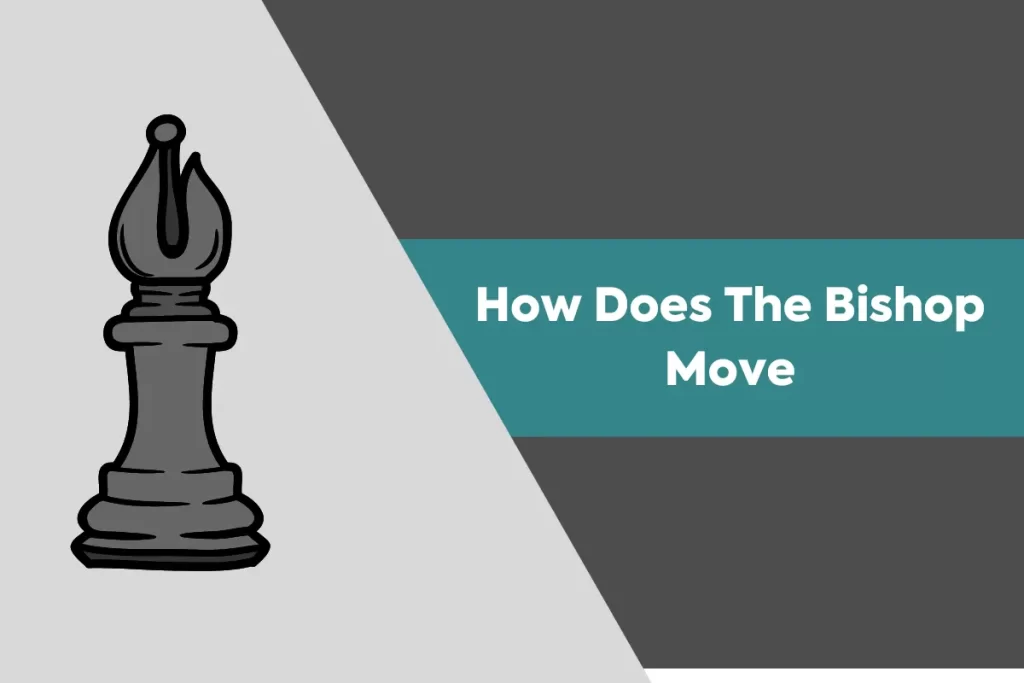
What is a Bishop?
There is a cut-out on the top of a bishop, which gives it the appearance of a chess piece. Every player gets two bishop pieces on the board. In this game, the kingside bishop sits on the middle row between the knight and the queen, and the queenside bishop sits between the knight and queen on the row closest to the participant on the board.
In chess, the bishop has the same value as the knight, with three points on average. Despite its versatility, it is less valuable than a rook since it is not limited to one color square and can move anywhere. The queen and the king are the only two things that can move diagonally at any time apart from this.
How does the bishop kill in Chess?
Bishops are capable of killing enemy pieces on their paths. In contrast to knights, bishops are not able to jump over other pieces. A captured enemy piece can be placed on your bishop’s path if one is present. Put your bishop in its place and remove that piece from the board. You can use your bishop to capture any piece in this way.

Due to the fact that the black pawn is on the white bishop’s path of movement, the white bishop can capture the opponent’s black pawn. Besides moving along the marked diagonal, the white bishop can also move diagonally. In spite of this, the white bishop cannot move on one of its diagonals since the white knight is present. As a result, the white knight blocks the path of the white bishop.
It is also important to remember that one piece can only be captured per turn in chess. It is not allowed to capture a piece twice in chess. This means that the white player would have to wait until the next turn after the white bishop captured the black pawn. The bishop could not kill both black pawns in a single turn if there were two on the diagonal. Unless otherwise stated, such a move would be illegal. My point is clear, I hope! Chess bishop captures are all about how they work. Let’s continue our discussion.
How Does The Bishop Move In Chess?
What is the movement of the bishop in a chess game? Diagonal movement is the preferred way to move bishops forward and backward at the same time. No matter what color they start with, they stay there.
A bishop cannot jump over another piece. Bishops must stop before reaching another piece or capture it if another piece is in their way. Black Rook can be captured here by the white Bishop.
A straight line connected the bishop’s movements diagonally
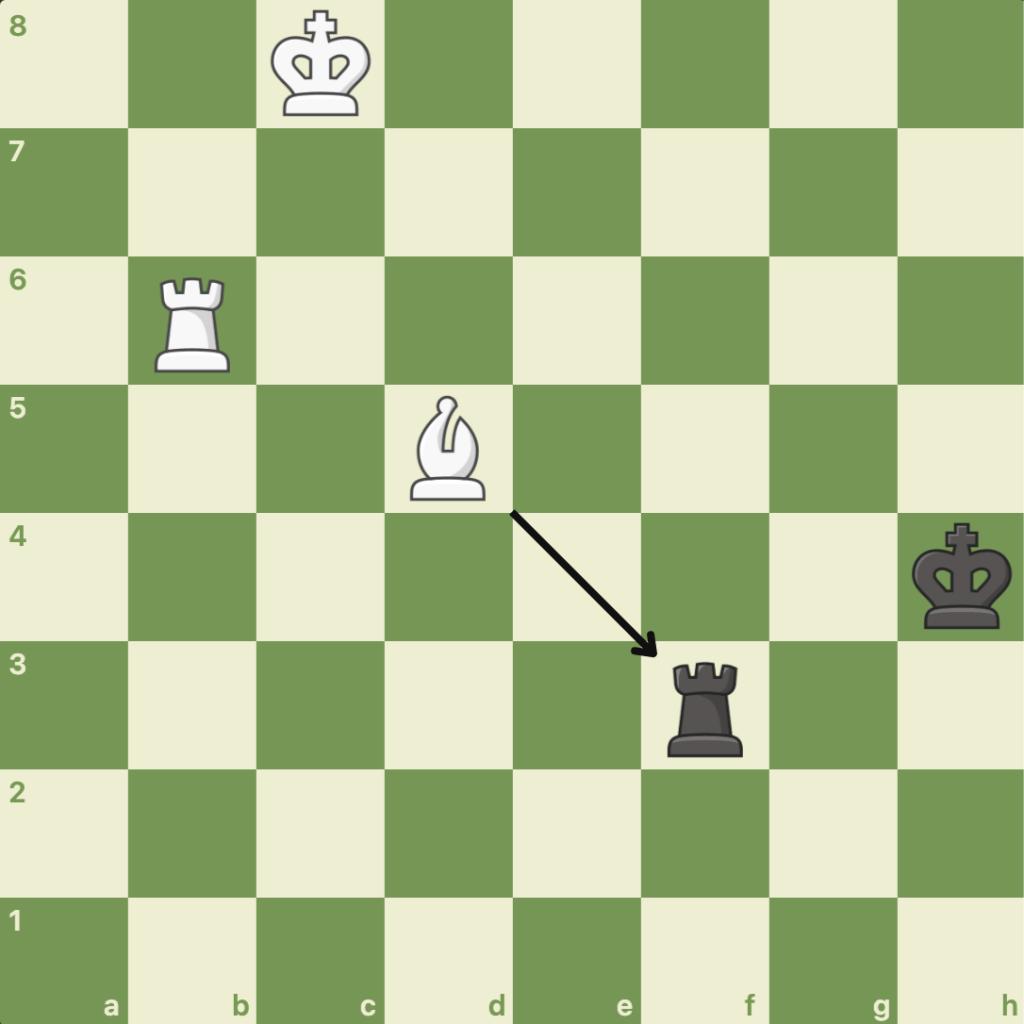
How to move your Bishop with these tips
- Two Bishops are available at the beginning of the game. Both move on squares with light colors, while the other moves on squares with dark colors. It is always the same color on which bishops start.
- You have moved one of your Bishops like a banana if both of your Bishops are on the same colored square.

Make sure that your pawns are not blocking your bishops with their diagonals.
Good Bishop Vs Bad Bishop
The bishop is referred to as a bad bishop if his own Pawns block his movement. A white Bishop cannot move around the board as freely as a black Bishop due to the proximity of the white Pawns. The bad bishop should escape from behind the pawn chains into open space (lines) when it is locked behind the pawn chains. By using Bc1-Bf4, white can free its bad bishop.
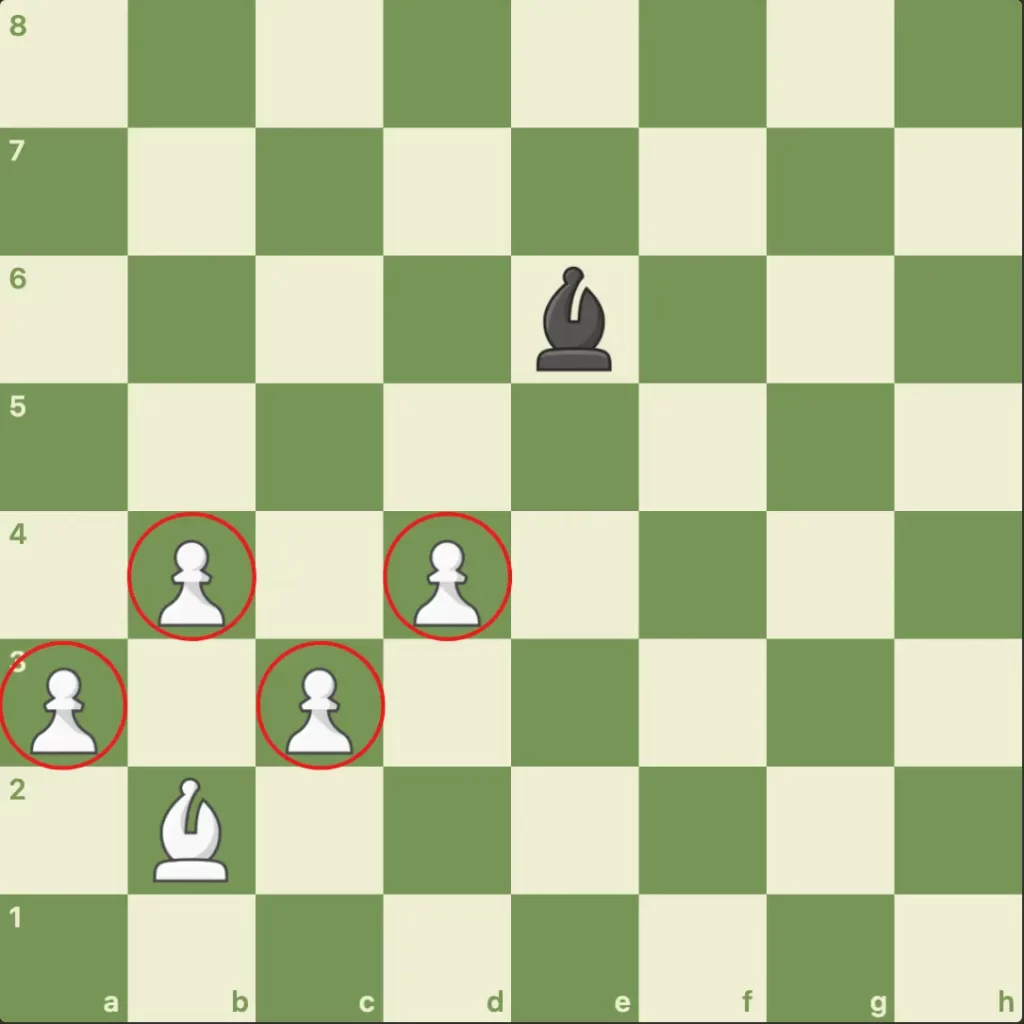
It is also worthwhile to point out that your light-squared Bishops and dark-squared Bishops are an excellent double act. In conjunction with each other, they can control a large portion of the board. A bishop pair consists of both of them. More information will be provided later.
The Fianchettoed Bishop
Fianchetto means little flank in Italian. The “-etto” means little and “fianco” is flank or side). Fianchettos are ways of developing the bishop to the side in chess. Putting a Bishop behind the g-pawn or b-pawn is done by moving them one square. It is possible for bishops to have a lot of strength around the long diagonal when it is opened. Underneath, there is fianchetto on both white bishops.
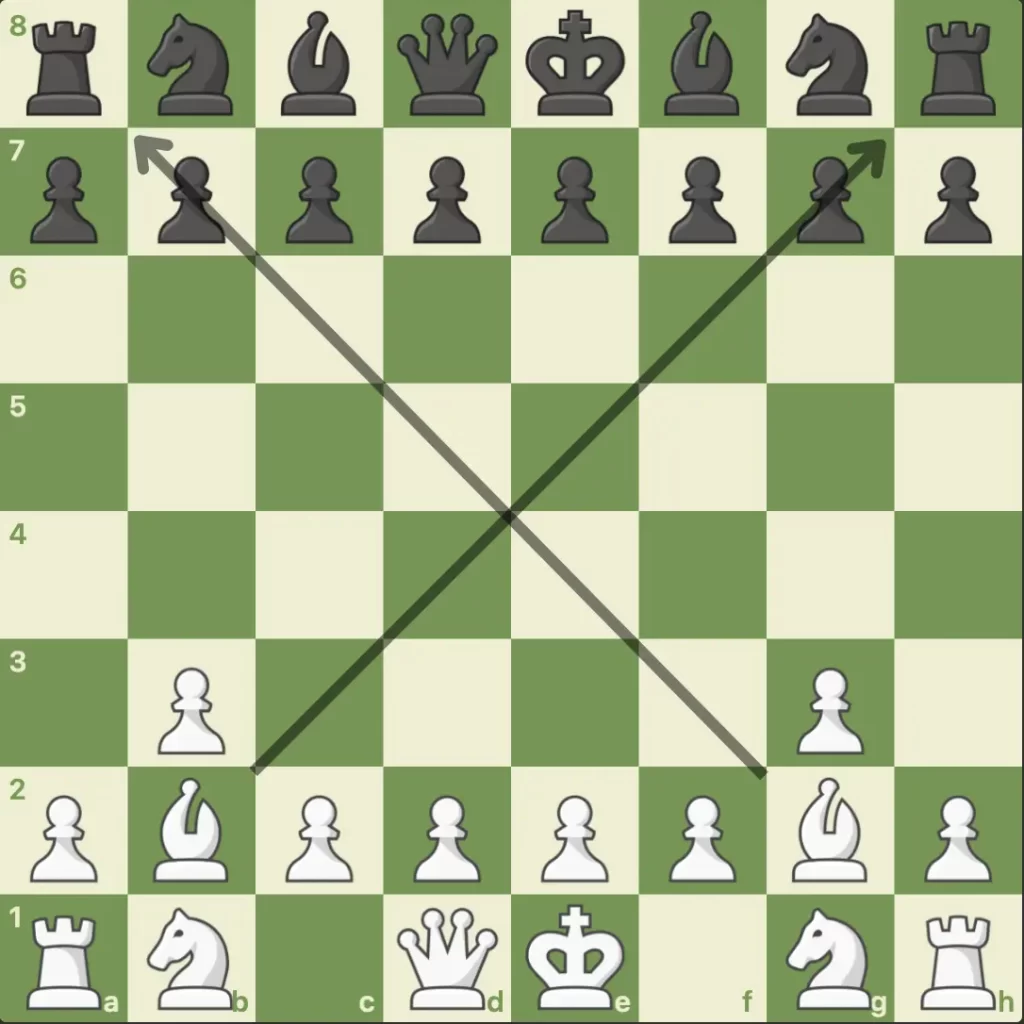
There are times when you shouldn’t fianchetto. In order to develop the Bishop, two moves are required. Some situations may not allow for it. There are many openings that require a fianchetto. Black fianchettoes on the Kingside of the King’s Indian Defense. 1.d4 Nf6 2.c4 g6 3.Nc3 Bg7
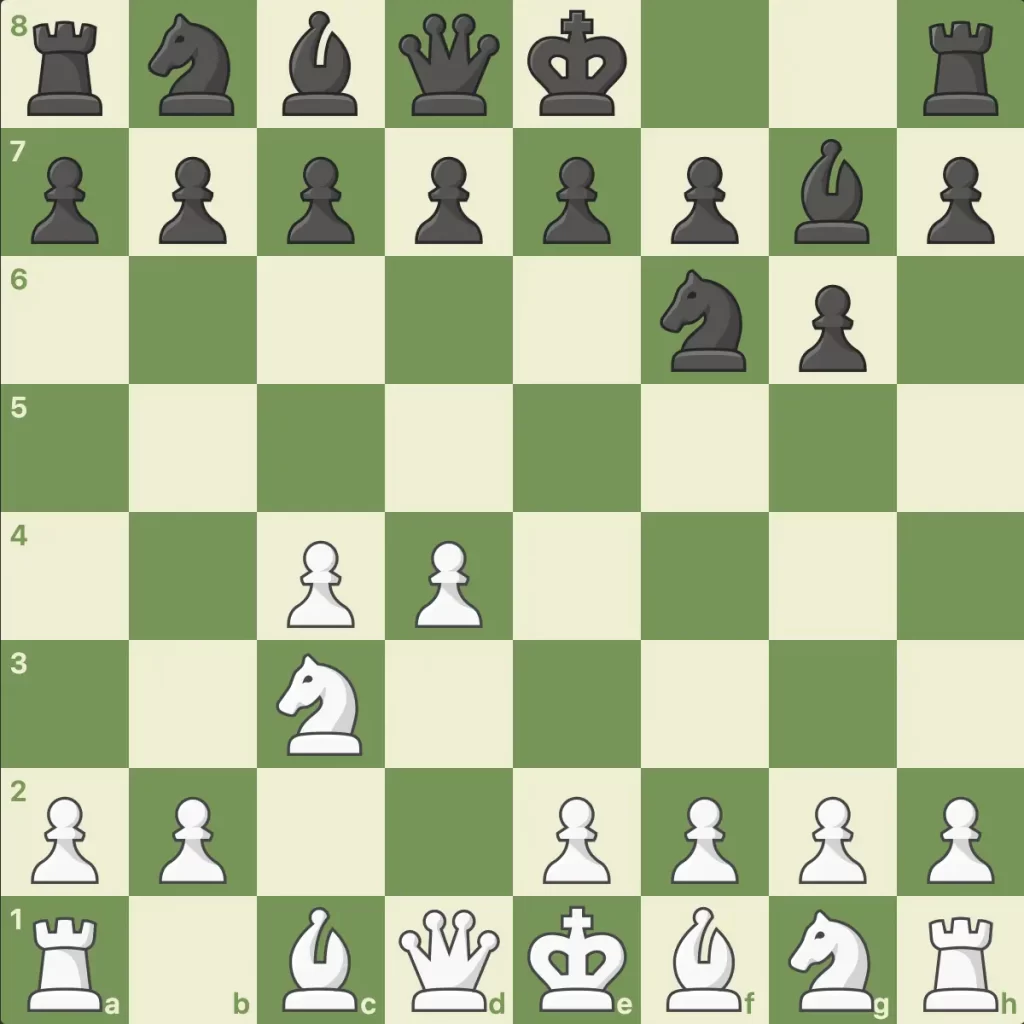
In addition to the Queen’s Indian, the Dragon Sicilian is another popular defense that uses a fianchetto. In the Italian language, fianchetto is pronounced “fee-ing-ket-toe”. Although most English speakers pronounce it fee-in-chet-toe. Increasing the activity of your bishops can be achieved by fianchettoing them.
Bishops Do Not Have A Special Chess Move
The bishop has no special moves, which may sound a bit sad. It’s not difficult to remember these movements as opposed to other pieces. The bishop is poor!
A pawn can promote into a bishop, which is the only special thing to remember. An extra bishop can be transformed into a pawn on the other side of the board when it reaches the other side. Second (or third) queens are usually the result of pawn promotion.
Occasionally, choosing chess pieces that are ‘lesser’ than a king makes sense. The term ‘underpromotion’ refers to this. Average chess games are unlikely to feature players with a third bishop.
Bishop Can’t Jump Over Other Chess Pieces
Bishops have a great deal of freedom to move across the board. There is, however, a rule that makes it impossible for the bishop to jump over other chess pieces. It becomes more difficult to maneuver around if your own pieces block diagonal movement lines. You can limit the movement of the bishop with your own pieces by following these steps:
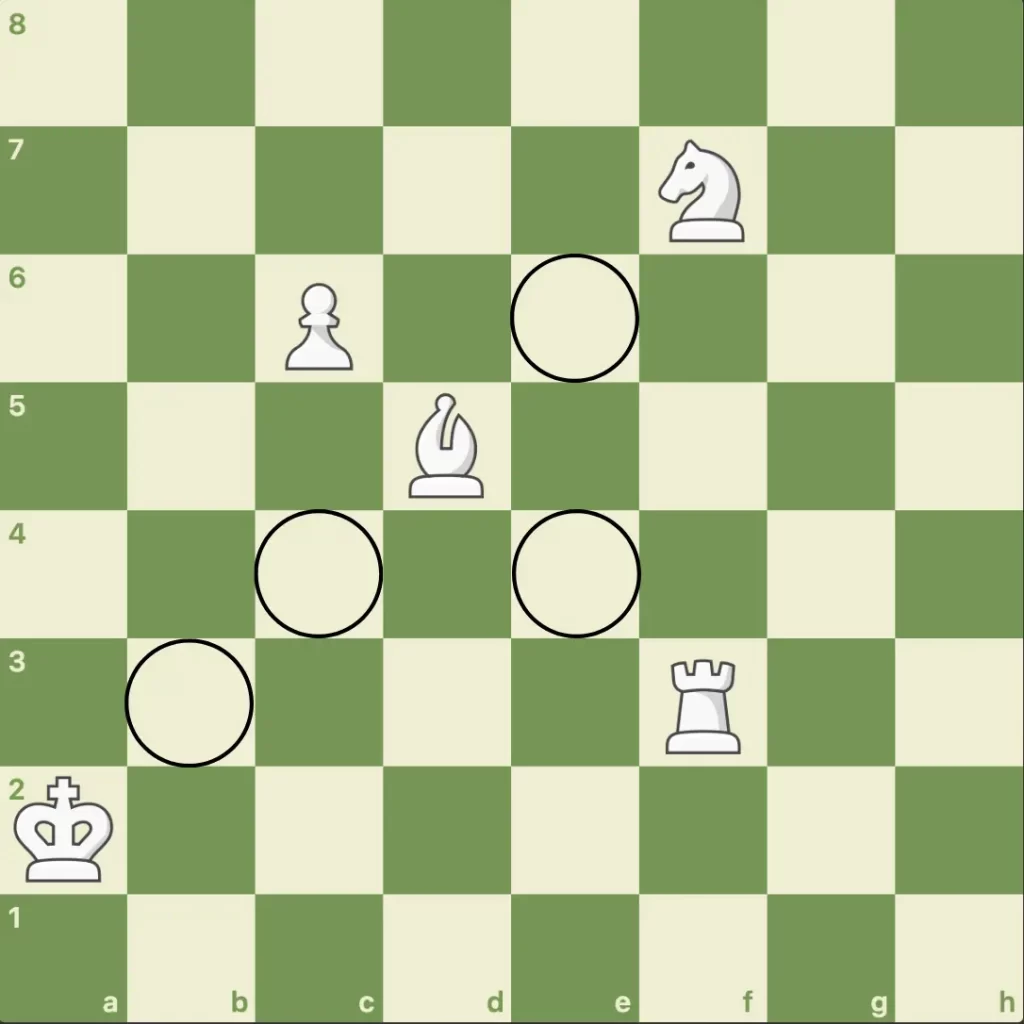
There are no circumstances under which chess pieces may share a square. It is, however, possible to increase the movement range slightly if the opponent’s colored pieces are involved. It is possible for the rook to attack and capture squares as well as take pieces.
It is impossible to move past your opponent’s chess pieces under any circumstances. Only capturing them and moving onto their position is permitted by a bishop:
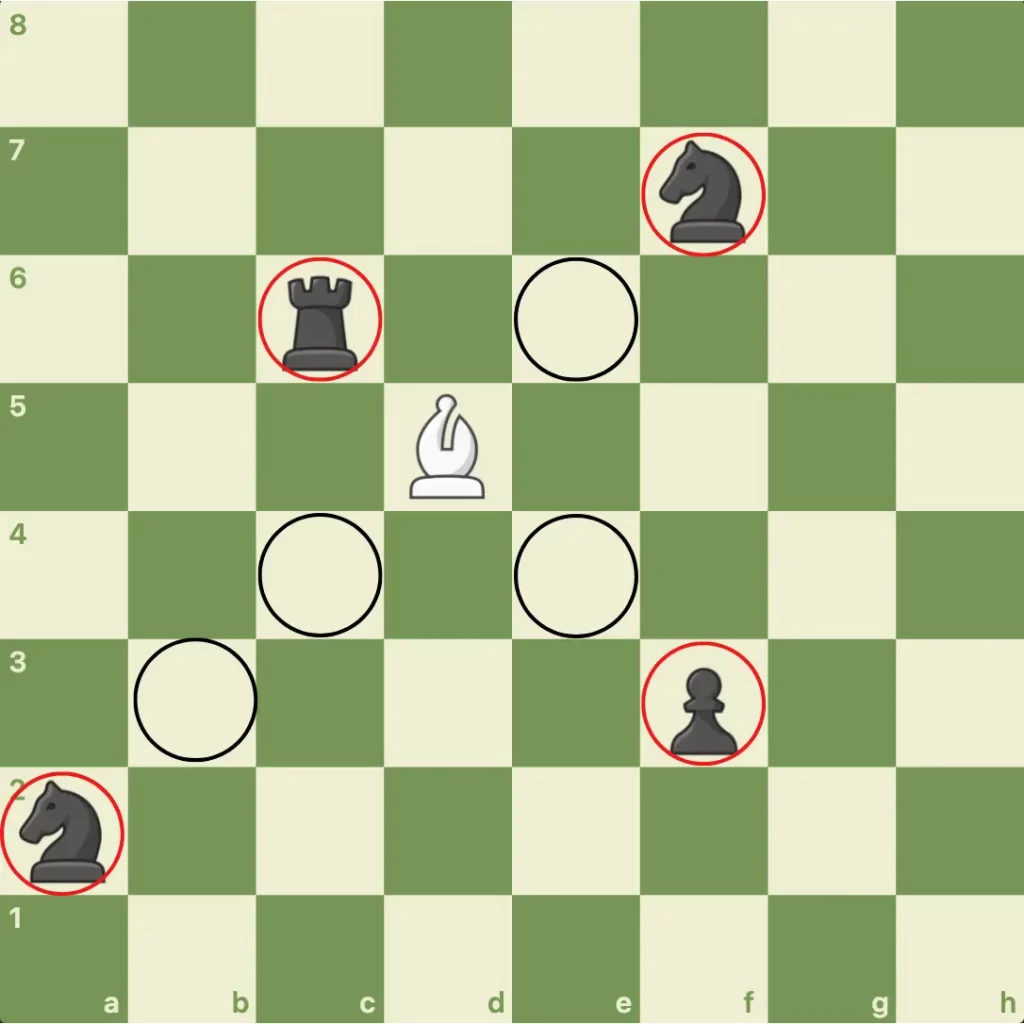
Can a bishop take a king?
A bishop cannot capture a king in chess since kings cannot be captured. Checking or checkmating the king is, however, possible for the bishop. As soon as the king is captured, a chess game is over at checkmate.
This point can only be understood if you are familiar with the concept of checkmate. A checkmate occurs if the king is attacked and can’t be removed from the attack.
Chess rules state that whenever a checkmate occurs, the game immediately ends. The play ends when one side checkmate and the other side checkmate lose. Checkmate rules are explained here.
Checkmate is the stage before the king is captured, so you can think of it as the final moment before he is captured. Because of this, the bishop cannot capture the king when the game ends in checkmate. Bishops can, however, deliver checks or checkmates to kings.
Can a bishop take a queen?
Your bishop can take the queen if your king is not in check. Your king cannot be taken unless he gets out of check if he’s in check already. The king is under attack in chess when a check occurs.
Please note that a check is different from a checkmate. As opposed to checkmate, which cannot be saved, check means that the king is under attack but still can be saved. It is also the standard rule that if you have a king in check, you have to remove it from the check before making any legal moves.
Your king can be taken out of check-in in three different ways:
- The attacking chess piece (the one granting a check) can be captured.
- As long as your king remains between your attacking piece and your defender.
- If you move your king into a completely safe square from attack, you are in total control.
You can remove your king from the check in any one of these three ways. You can therefore remove your king from check simultaneously by capturing the queen with your bishop. This can only be done then. Chess players can move their bishops to the other side of the board as they play. Let’s also talk about that!
Types of Bishop
Speed-loving bishops make everything who steps on their diagonal road-kill, including Formula 1 racers. A bishop, however, could be a truly ferocious piece if these diagonals do not block
Active bishop
As a Bishop, you must be active when your pawn chain isn’t moving, or you don’t live on a clean diagonal. In order to remain active, bishops must acknowledge each other across the board quickly. As can be seen in the example, and in contrast to the Bishop with a dark, squared design on g7, the Bishop on d5 is highly active. Due to the closed central area created by pawns, the bishop with the fianchetto is inactive.
It is necessary for you to find a method of freeing an inactive bishop from a pawn chain if it is encased in a chain of pawns. Despite the fact that Black is behind the pace of activities, his most effective strategy is to move his squared Bishop to the B6 square, which is much more energetic (Bf6-Bd8-Bb6). A bishop’s strength tends to be greatest in an open game.
Bishops have more scope when there are fewer pawns in their way. Your bishops’ work should be evaluated every time you change your pawns! As you change open positions to closed ones, remember to keep your bishops’ health and well-being in mind, as changing open positions to closed ones can have significant effects.
Effective bishop
“Useful” bishops perform active and defensive tasks that are vital to the church’s survival. It is possible to look ugly when you are a defensive Bishop. A significant challenge could, however, result from its absence. It is great to have an active bishop. Some claim ownership over only a small section of land, however.
Consequently, you will need to enter into an agreement with them or develop something that facilitates their success. The dream bishop, however, is an active and practical leader. In addition to covering a large area, it serves a specific, valuable purpose.
There is a passive position with Black’s Dark squared Bishop on e7. When you carefully examine the board, you will notice that the Bishop provides valuable protection for the backward pawn on d6. White’s queen could quickly eat Black’s weak D6 pawn by destroying two dark-squared bishops. Therefore, it is beneficial for Black to have a bishop with a dark-squared square!
Big pawn
In chess, a bishop is known as a Tall Pawn if it isn’t serving a purpose and is being pushed into the pawns of its pawns (resulting in inactive play). Bishops of this type grow into overgrown pawns that cannot become Queens once atop the game board. The white bishop can’t escape from this position because the pawn chain entraps it. That’s too bad. Black bishops, however, are roaming around freely and in full swing. You don’t want to turn white, so be cautious!
How can we Effectively use the bishop in chess?
On an open diagonal, place bishops
Bishops are long-range pieces, as I mentioned earlier. This enables you to transfer your bishop in a single movement between the left and right sides of the chessboard.
In order for it to work properly, however, the bishop has to pass through squares that are not occupied. Generally, bishops like open positions and open diagonals where they can move freely around the board without fending off too many pawns.
Good bishops vs. bad bishops
A bishop’s position relative to his pawn determines whether he is good or bad. A bishop whose movement and influence are restricted by the pawns should be considered a “bad bishop” if the majority of your pawns are located on the same color square. On the other hand, an opposing bishop can act with more influence and freedom since it occupies the opposite color to the majority of your pawns. Bad bishops can often be useful in defending pawns, though a good bishop is generally more advantageous.
Activate your bishops
Bishops that are active are outside their pawn chains. Moreover, a bishop who is inactive is one whose pawn chain has entrapped him. Pawn chains are linked diagonally by two or more pawns. Active bishops can be more active in the game since they are free to move around.
In order to maximize your bishop’s power in the game, you should make them active and utilize their abilities. A good bishop can be active or inactive, as can a bad bishop. A clear understanding of “good and bad bishops” and “active and inactive bishops” is imperative.
Based on your pawns’ position relative to your bishop, we say whether you have good bishops or bad bishops. Depending on whether the bishop is outside or inside the pawn chain, it is determined whether the bishop is active or inactive.
Try a fianchetto
In chess, a fianchetto is a series of moves designed to help the bishop develop quickly. The fianchetto begins with moving a pawn one or two squares forward on the b- or g-file. It is possible to develop the bishop to the second rank once the pawn moves. By doing so, you exert immediate control over the center of the board while at the same time providing a sound defense against king casting. White pieces can leverage a fianchetto to disrupt your opponent’s development quickly if you are playing as white. Fianchettos will assist you in developing a counterattack in the center of the board if you play Black.
Use bishops in the endgame
Especially when only pawns remain on the board, bishops become very powerful in the endgame. Here is when the bishop can take advantage of their ability to move long distances. Only one move is needed to move the piece from one side to the other.
As well as protecting your advancing pawns, the bishop can also promote them. This is the time when your bishops need to be wisely utilized. Therefore, using your bishops in these ways can be useful.
Faqs
The bishop might be confusing to you if you’re just learning how to play chess. The following are the most frequently asked questions. I might seem silly answering them, but let’s take a look at them. Below you will find a discussion area where you can share your question if it is missing:
Question 1: Why do bishops have a cut?
Answer: A war elephant existed in Shatranj, not a bishop. War elephants were prevalent in Shatranj. Hence, the pieces were originally formed like a war elephant’s trunk, with a slash across the top symbolizing the trunk’s opening.
Question 2: Can A Bishop Move Over Other Pieces?
Answer: It is only a knight that can maneuver over other pieces in chess. There are no rules prohibiting bishops from moving over other chess pieces unless otherwise stipulated by the rules of the game. When attacking, bishops can take their square but cannot move over the opponent’s pieces.
Question 3: Is a rook more powerful than a bishop?
Answer: Accordingly, the rook is more powerful than the bishop since the bishop is valued at 3 points. As long-range pieces, both bishops and rooks are chess pieces, but the rook can occupy various colors, unlike bishops, which can only occupy dark or light squares.
The rook is clearly preferable to bishops for these reasons. A bishop develops faster than a rook during the early stages of chess piece development. By making the castling move with the king, the rook will get into the game a lot faster.
Question 4: Can a bishop move in a straight line?
Answer: Bishops move diagonally across the board in a straight line. In addition to moving any number of squares, it can move until it reaches the end of the board or another piece. Jumping over other pieces is not possible for the bishop. The bishop captures its own path by landing on the opposing piece’s square.
Final Verdict
There is a lot of range with the Bishop. In one turn, it can traverse both sides. Only one color can be used with it, which is a weakness.
The bishop can move all diagonal squares. Objects in their way cannot be jumped over. If they start on a black square, bishops must move diagonally from a black square to a black one. Other pieces on the board can be protected or covered by the bishop. Two bishops will only represent your color. It is permitted for the whites to move diagonally on whites, but the blacks can only move diagonally on blacks.
I hope after reading How Does The Bishop Move In Chess article, your all confusion got cleared. If you still want to ask questions, you can comment below. Thanks!


